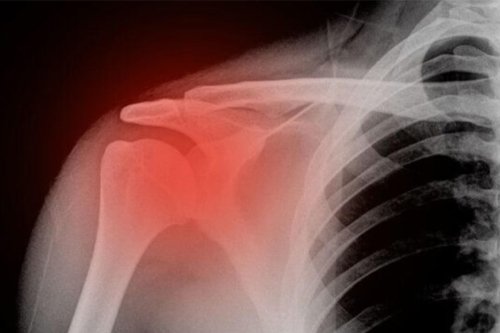Meet Our Doctor
Dr. Vrushabh Kumbhare
Orthopedic and Joint Replacement Surgeon
Educational details:
- M.B.B.S. (4.5 years +1 year Internship): August 2009 - April 2015 N K P Salve institute of medical sciences and research centre, Digdoh hills, Nagpur, Maharashtra (Under Maharashtra University of Health Sciences, Nashik)
- M.S. Orthopedics(3 years): May 2017- August 2020 Jawaharlal Nehru Medical Collage, Sawangi (Meghe) (Under Datta Meghe Institute of Medical Sciences Deemed to be University)
Experience:
- Senior resident: (September 2019 – May 2021) Department of Orthopaedics, Jawaharlal Nehru Medical Collage, Sawangi (Meghe)


Dr. Vrushabh Kumbhare
Orthopedic and Joint Replacement Surgeon
Shoulder Fracture In Nagpur
A shoulder fracture refers to a break or crack in one or more of the bones that make up the shoulder joint. The shoulder is a complex joint formed by the clavicle (collarbone), scapula (shoulder blade), and humerus (upper arm bone). Fractures can occur in any of these bones due to various causes such as trauma, falls, sports injuries, or underlying medical conditions. Feel free to visit our clinic and schedule an appointment.
The symptoms of a shoulder fracture may include intense pain, swelling, bruising, and difficulty moving the affected arm. Diagnosis is typically confirmed through imaging studies, such as X-rays or CT scans, which can help determine the location and severity of the fracture.

Common types of shoulder fractures
Clavicle Fracture (Collarbone Fracture):
- This involves a break in the collarbone, often caused by a direct blow or fall onto the shoulder.
Scapula Fracture (Shoulder Blade Fracture):
- Fractures of the scapula are less common and usually result from high-energy trauma, such as a car accident or a significant fall.
Proximal Humerus Fracture:
- This type of fracture occurs at the upper end of the humerus, near the shoulder joint. It can be caused by trauma or, in some cases, due to weakened bones (osteoporosis).
Symptoms Of shoulder fracture
Pain:
- Thus, Intense pain is a hallmark symptom of a shoulder fracture. The pain may be sharp, throbbing, or constant, and it often increases with movement.
Swelling:
- Once, Swelling around the shoulder joint is common and can occur rapidly after the injury.
Bruising:
- Bruising or discoloration may develop around the shoulder area due to bleeding under the skin as a result of the fracture.
Limited Range of Motion:
- The ability to move the shoulder may be significantly restricted. Simple activities like lifting the arm or reaching for objects can be challenging.
Deformity:
- In some cases, a noticeable deformity or misalignment of the shoulder may be visible, especially if the fracture has caused displacement of the bones.
Tenderness:
- The shoulder area may be tender to the touch, and certain areas may be more sensitive or painful than others.
Difficulty or Inability to Move the Arm:
- Due to pain and the mechanical disruption caused by the fracture, there may be difficulty moving the affected arm.
Treatment of shoulder fractures
Immobilization:
- Thus, In many cases, especially for clavicle (collarbone) fractures or minimally displaced fractures, immobilization using a sling or brace may be sufficient. This allows the bones to align and heal naturally.
Pain Management:
- Once, Over-the-counter pain medications or prescription pain relievers may be recommended to manage pain and reduce inflammation.
Ice Therapy:
- Once, Applying ice packs to the affected area can help reduce swelling and provide pain relief. It’s essential to use a cloth or towel to protect the skin and avoid direct contact with ice.
Physical Therapy:
- Firstly, Once the initial healing has occurred, physical therapy may be prescribed to restore range of motion, strengthen the shoulder muscles, and prevent stiffness.
Surgical Intervention:
- Thus, Surgery is considered in cases of severe fractures, fractures with significant displacement, or fractures involving the joint. Surgical options may include the use of plates, screws, or other fixation devices to stabilize the bones.
Closed Reduction:
- For certain types of fractures, healthcare professionals may attempt closed reduction. Once, a procedure in which the bones are manually realigned without surgery.
Open Reduction:
- Thus, In cases where closed reduction is not feasible, open reduction may be performed. Once, This involves surgically accessing the fracture site to realign and stabilize the bones.
Rehabilitation:
- Following the initial healing phase, rehabilitation is crucial to restore strength and function to the shoulder. This typically involves a gradual progression of exercises under the guidance of a physical therapist.
